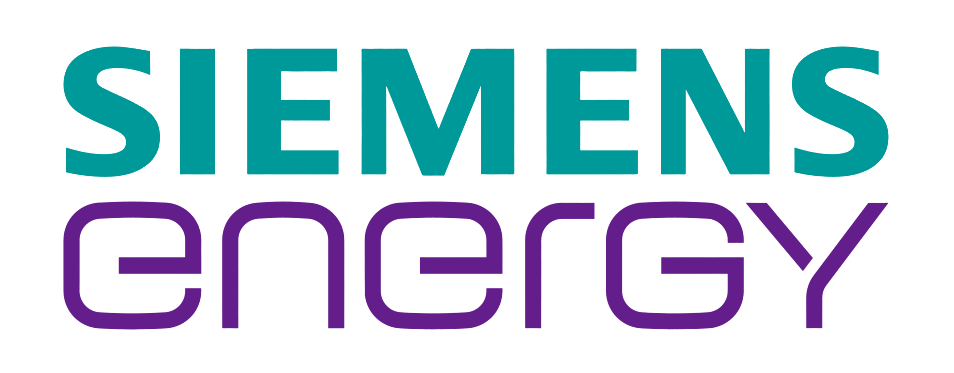Trends in Respiratory Care – Digital Innovations Shaping the Future of Respiratory Health
Executive Summary
Respiratory diseases, a significant cause of morbidity and mortality globally, present a substantial challenge in management. The susceptibility of individuals to environmental factors and pathogens can lead to worsening health, underscoring the importance of effective respiratory care. Digital health technologies (DHTs) have been proven to be valuable in improving respiratory care, but their wider adoption has been restrained by ethical and regulatory challenges. To address these challenges, healthcare providers, academia, and industry players must work together to shape the future of respiratory care.
___________________________________________________________________________________________________________________________
Introduction
Respiratory diseases, such as asthma, chronic obstructive pulmonary disease (COPD), lung cancer, asthma, and cystic fibrosis, are significant causes of morbidity and mortality globally. The prevalence of these diseases is substantial, with over 454 million individuals worldwide affected, and this number is increasing annually due to factors like smoking, pollution, and other risk factors. This highlights the pressing need for advanced therapeutics and treatment care to manage these conditions effectively. The following exhibit shows the growing burden of respiratory diseases like lung cancer and COPD worldwide.
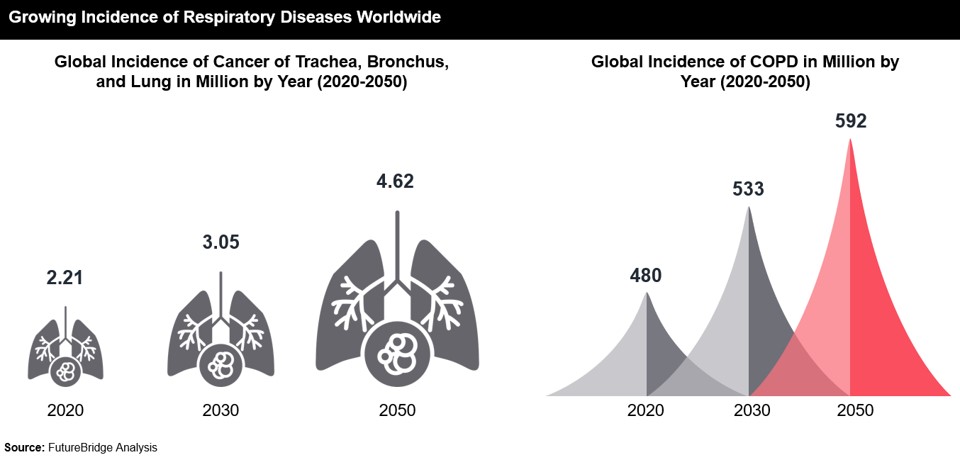

With the growing burden of respiratory diseases, the demand for these devices is also increasing, as is the demand for novel innovations. The following exhibit presents a landscape of key respiratory care devices categorized by their application area
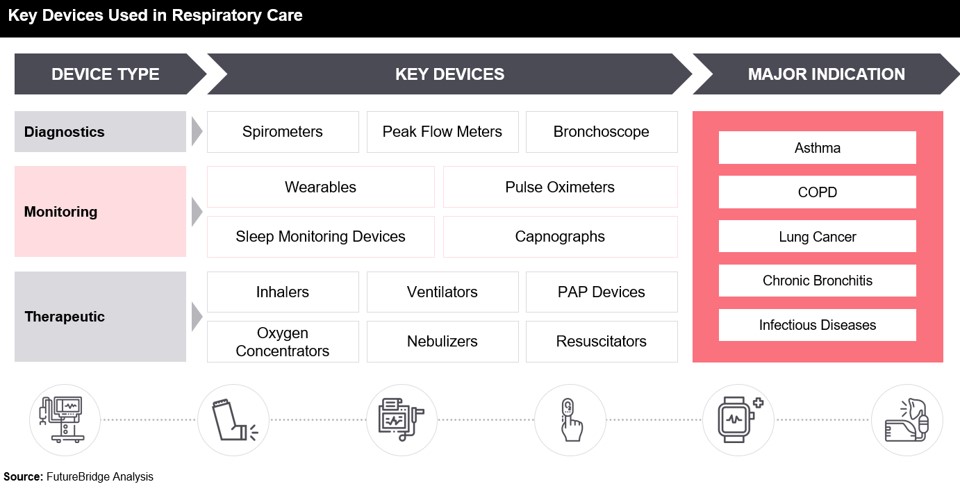

Ongoing Trends in Respiratory Care
Novel innovations and technological advancements in healthcare are transforming the way healthcare was imagined a decade ago. Particularly in respiratory care, recent breakthroughs like intelligent respiratory monitoring systems, predictive analytics for respiratory diseases, advanced ventilation technologies and home healthcare services are profoundly shaping the future of diagnosis, treatment, and management of respiratory conditions.
Furthermore, the healthcare industry in the United States alone generates about six million tons of medical waste each year, posing a major environmental challenge. This significant an amount of waste has prompted the industry to seek more sustainable practices to reduce the ecological footprint and manage medical waste more efficiently using recyclable and biodegradable materials and reducing excessive packaging.
Therefore, based on our analysis, four major areas in respiratory care showcased in the exhibit below are currently receiving significant attention from both healthcare providers and industry players.
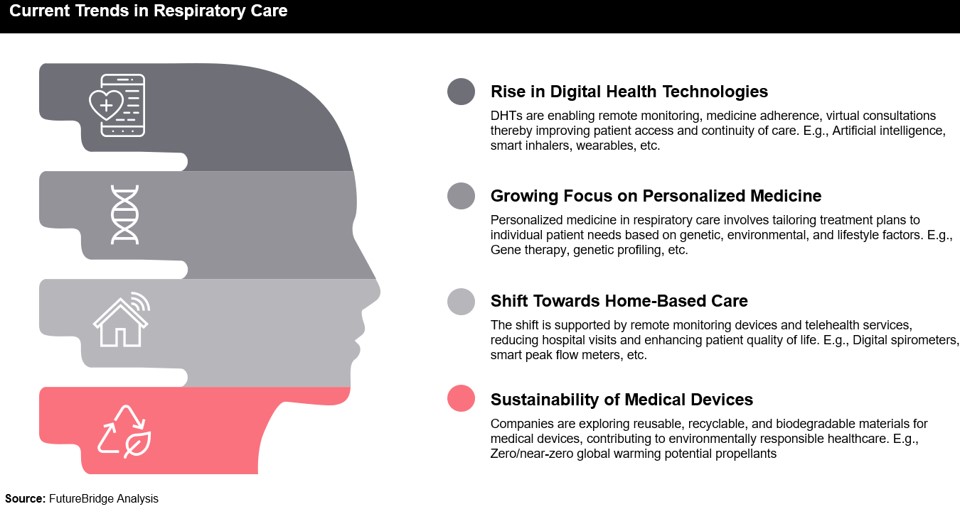

Breathing Easy: Redefining Respiratory Care Through Digital Health Technologies (DHTs)
Respiratory care stands at the forefront of digital healthcare revolution and numerous digital devices and solutions have been approved and introduced to the market. For example, add-on and integrated designs for smart inhalers, DHTs, such as wearables, smart inhalers, remote monitoring devices, artificial intelligence, mobile applications, etc. These play a transformative role in respiratory care by enabling/enhancing remote monitoring, diagnostic accuracy, personalized treatment interventions, and data-driven management strategies.
For example, patients using Propeller Health (ResMed) sensors and mobile applications have reported a 58% increase in medication adherence, 78% reduction in rescue inhaler use and a 63% increase in asthma control. Also, there has been a 57% and 35% reduction in emergency room visits and hospitalizations among asthma and COPD patients using Propeller, respectively. The following exhibit provides some of the major types of DHTs and their application in respiratory care.
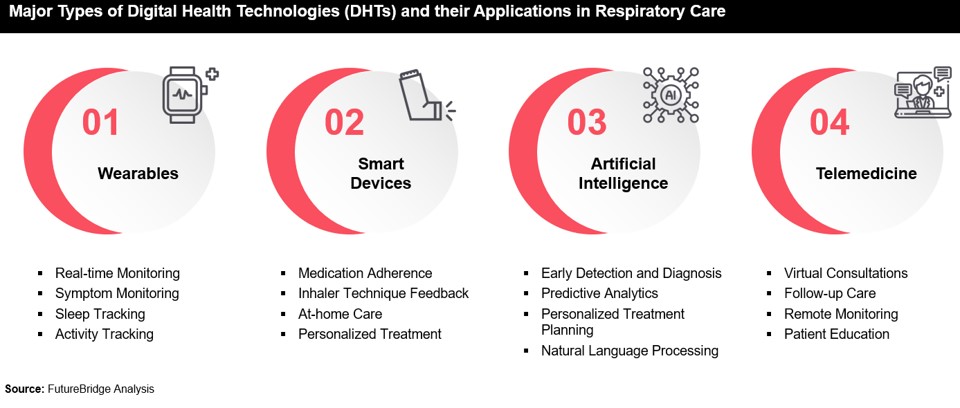

Among all the DHTs in respiratory care, artificial intelligence (AI) and its sub-types, like machine learning (ML) and deep-learning algorithms, have experienced remarkable growth over the last decade. This growth is driven by recent technological advancements in computational capacity and the expanded acquisition and real-time accessibility of vast quantities of diverse data. Thus, in this article, we have deep dived into the emerging role of AI and its growing impact on respiratory care.
Artificial Intelligence (AI): Revolutionizing Diagnosis, Treatment and Disease Management
AI is revolutionizing respiratory care by providing advanced analytics, personalized insights, real-time monitoring, and predictive capabilities that optimize diagnosis, treatment, and management of respiratory conditions. This integration fosters a more coordinated approach in healthcare, enabling seamless data sharing and integration across various providers and settings, ensuring treatments are tailored to the most current patient data. There are numerous applications of AI in healthcare, particularly in respiratory care and few key applications of AI in respiratory care are shown in the exhibit below.
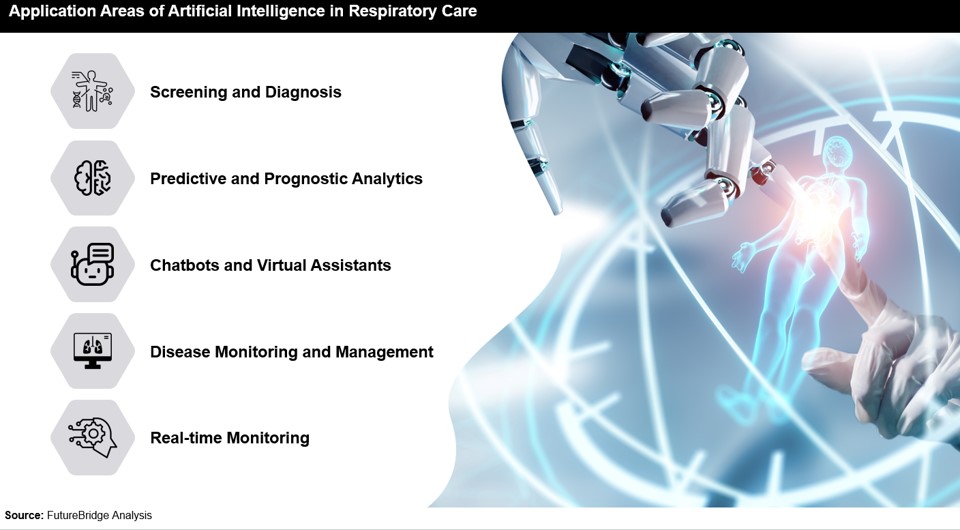

Respiratory Diagnostics – New Avenue for AI Innovation and Integration
The early diagnosis of diseases is pivotal in effective care delivery, and the substantial potential of AI in addressing this concern is gaining prominence. Recently, there has been a notable surge in novel AI solutions designed to aid in the diagnosis of respiratory diseases. These advancements enable personalized treatments, thereby enhancing patient outcomes.
For instance, in January 2024, IMVARIA Inc. secured FDA approval and CPT billing codes from the American Medical Association for Fibresolve, a digital biomarker solution utilizing AI for non-invasive diagnosis of lung fibrosis. This advancement facilitates formal billing for Fibresolve and streamlines financial processes, enhancing product integration into healthcare systems.
Similarly, to advance early lung screening in clinics and hospitals in Malaysia, AstraZeneca launched AI x-ray technology under the Projek Saringan Awal Paru-Paru (SAPU) program in Malaysia to advance early lung screening in clinics and hospitals in September 2023. This initiative encourages AI x-ray screening adoption in government healthcare facilities, promoting early lung abnormality detection and advancing lung care research.
These developments are boosting AI adoption and innovation in respiratory care, significantly impacting the market in the coming years. The exhibit below lists a few of the market initiatives encouraging the use of artificial intelligence in respiratory care.
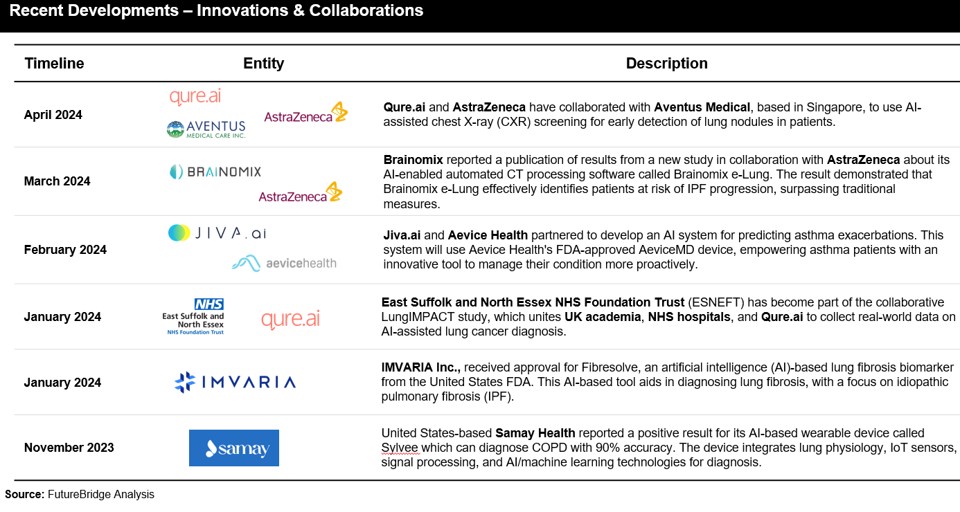

Challenges and Limitations of AI in Respiratory Care
AI-based solutions hold promise for addressing urgent challenges in respiratory care globally. However, their implementation is currently hindered by several challenges that complicate and slow down their implementation. These challenges include ethical concerns, regulatory hurdles, data access
Therefore, addressing these challenges requires a coordinated effort across the healthcare industry and AI players to establish clear guidelines, foster transparency, and conduct rigorous testing and validation of AI solutions in clinical settings. The following exhibit highlights few key challenges and limitations of the adoption of AI in respiratory care.
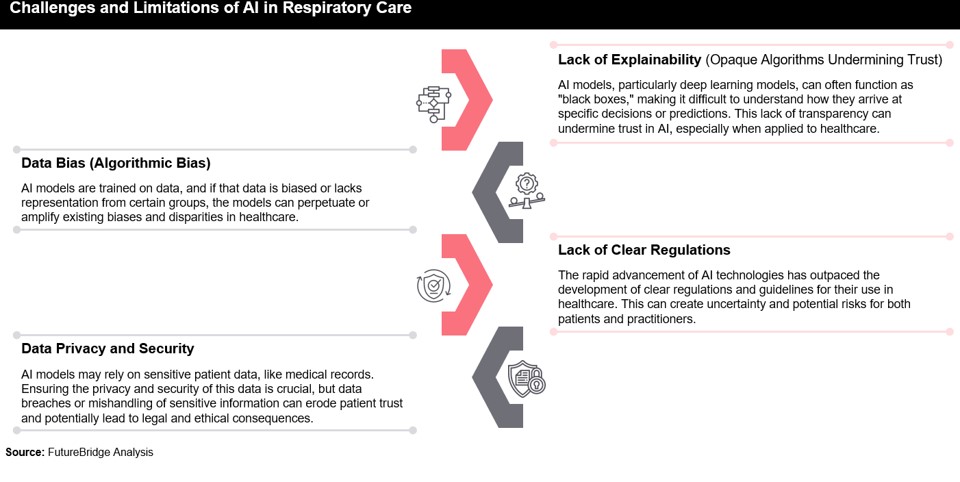

Navigating Challenges through Innovation and Collaboration
As the respiratory care landscape continues to evolve, clinicians, researchers, and technologists are navigating multitude of challenges of the integration of AI in respiratory care through a strategic combination of innovation and collaboration.
For instance, streamlining of regulatory standards for AI in healthcare is a paramount concern and the current regulations for AI in healthcare should focus on ensuring safety, effectiveness, patient privacy, and data security.
To establish a cohesive legal framework, governments are actively engaging stakeholders, including AI developers and cybersecurity experts. The following initiatives are proposed to address these challenges effectively:
- Cross-Disciplinary Collaboration: Collaborating with AI experts, medical professionals, and academicians to develop clinically relevant and technologically advanced solutions.
- Public-Private Partnerships: Utilizing public-private partnerships to fund research and development in AI-driven respiratory care.
- Educational Initiatives: Implementing educational programs to train healthcare professionals in the effective and ethical use of AI tools.
- Targeted Innovations and Approvals: Addressing ethical and regulatory challenges in AI product development to facilitate approvals, focusing on improving medical data quality, ensuring regulatory compliance, and enhancing data security.
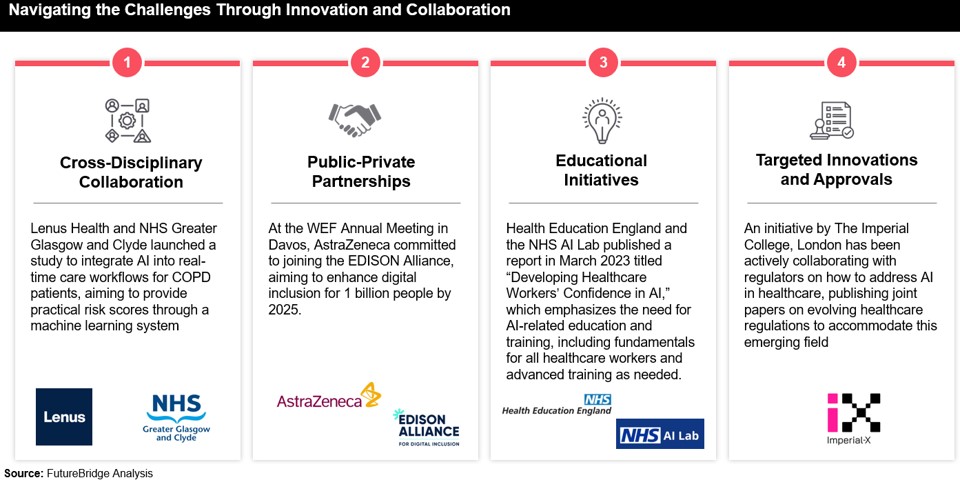

Therefore, the stakeholders in the respiratory care market are navigating the existing challenges through the initiatives mentioned above. However, further efforts are needed to educate patients and doctors about the benefits of AI to accelerate the adoption of AI solutions in respiratory care.
Futuristic Perspective
AI has significant potential to transform respiratory care by enhancing medical image interpretation, improving physiological data analysis, and enabling remote patient monitoring, leading to better outcomes and reduced burnout among healthcare professionals.
However, ethical, and regulatory challenges such as examinability, data bias, and unclear regulations must be addressed. Ensuring AI solutions are effective, trustworthy, and sustainable is crucial. By tackling these issues, stakeholders can harness AI’s power to create a more inclusive and efficient healthcare system, benefiting both patients and professionals.
FutureBridge Foresight
Future Bridge analysis indicates that the integration of AI in respiratory will revolutionize the field, offering substantial improvements in patient outcomes and operational efficiencies. Digital health tools have demonstrated an increase in medication adherence, reduction in rescue inhaler use, and overall improved control among users battling diseases like COPD and Asthma.
Furthermore, we anticipate that the rise in AI-driven early lung screening initiatives will enhance the early detection and treatment of lung abnormalities, potentially saving numerous lives and reducing healthcare costs. Major companies and startups alike are developing innovative AI solutions to enhance respiratory care. Thus, the adoption and utilization of AI in respiratory care will be on an upward trajectory over the coming years.
Enhance patient outcomes with cutting-edge digital health technologies in respiratory care. Partner with us to lead the future of healthcare innovation.































